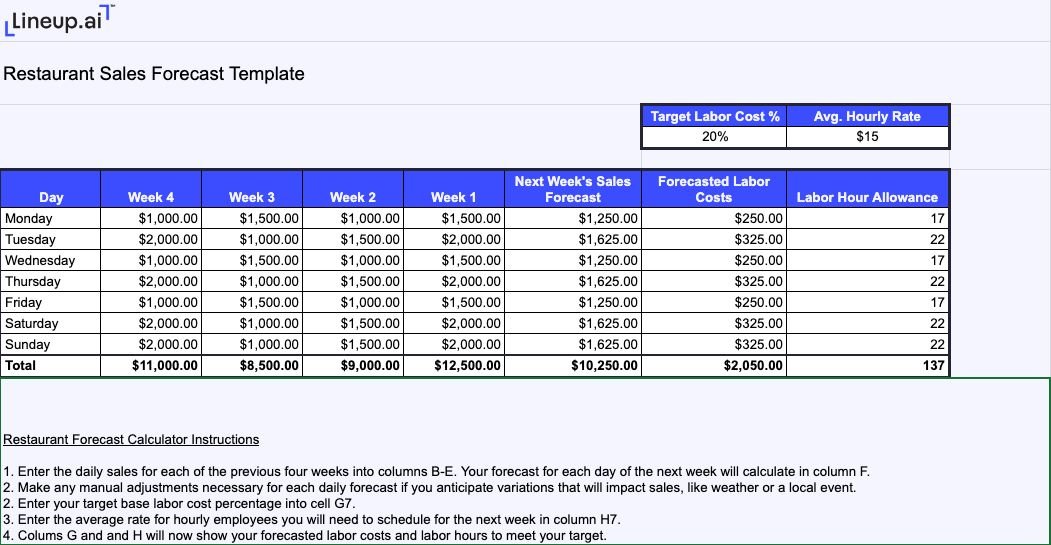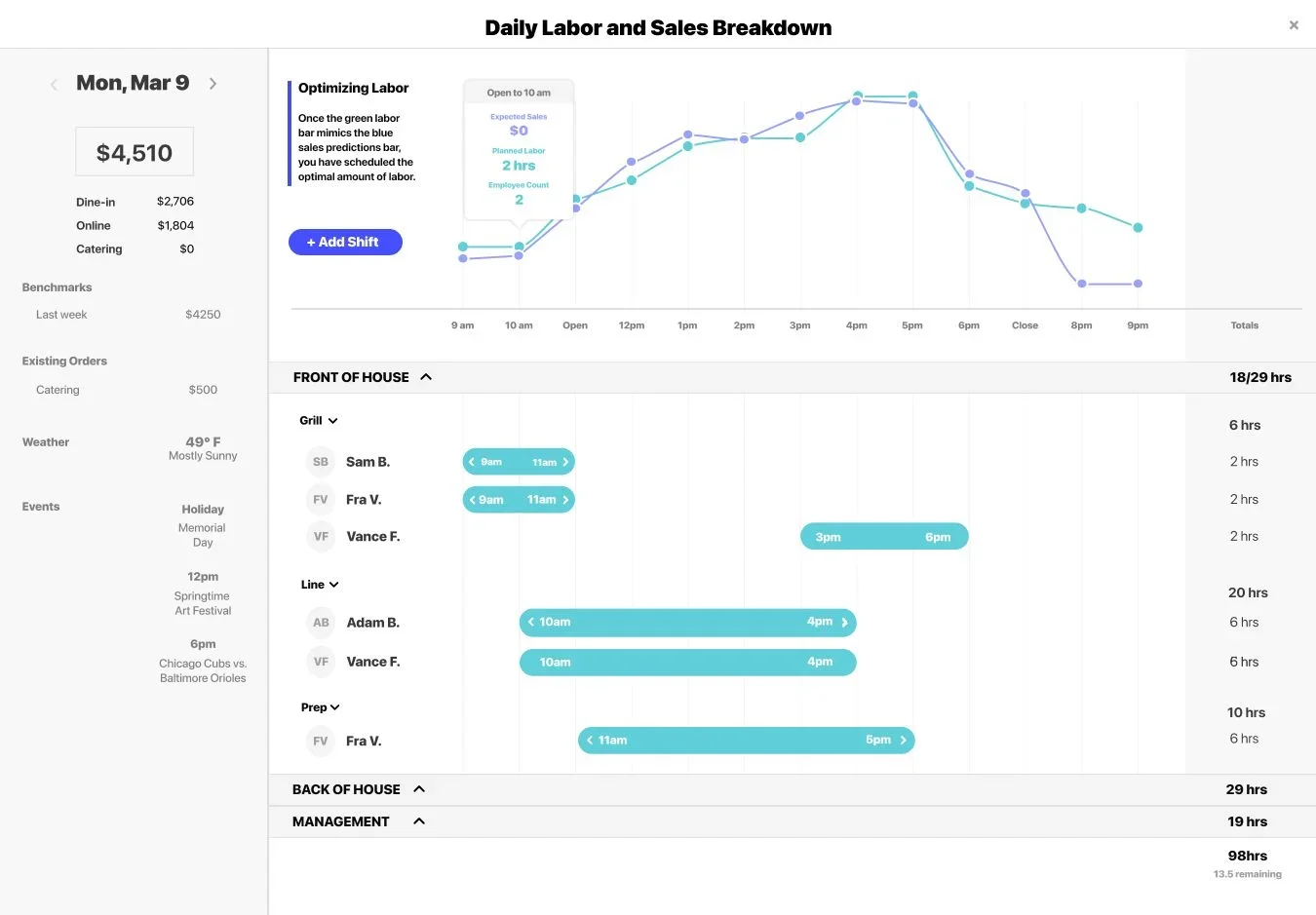Considering how tight restaurant profit margins are, sales forecasting is crucial to your restaurant’s success. Great forecasts can help restaurants control inventory, optimize shift scheduling, and predict profits. If you have an idea of what to expect in the coming weeks and months, you can build work schedules and order inventory to meet those needs without unnecessary spending.
The trick is ensuring that you have a reliable sales forecasting method. On this page, you’ll find downloadable templates in Excel and Google Sheets for efficient sales forecasting for restaurants of all sizes and service levels.
How To Use Our Restaurant Sales Forecast Template
Once you’ve either downloaded the Excel template or saved the Google Sheets template to your Google Drive, it’s time to start filling in your historical sales.
- Enter the daily sales for each of the previous four weeks into columns B-E. Your forecast for each day of the next week will populate in column F.
- Make any manual adjustments necessary for each daily forecast if you anticipate variations that will impact sales, like weather or a local event.
- Enter your target base labor cost percentage into cell G7.
- Enter the average rate for hourly employees you will need to schedule for the next week in column H7.
- Colums G and H will now show your forecasted labor costs and labor hours to meet your target.

Why Restaurant Sales Forecasting Is Important
Life would be easier if we could just see the future, but unfortunately, the closest we can get is an educated guess. In our industry, we call that a restaurant forecast. Most restaurants build their sales forecasts based on historical sales data and total restaurant capacity, then establish trends they can use to predict future sales.
Scheduling
Keeping a restaurant profitable and operational requires some data analytics. Building out a restaurant employee schedule is a particularly important task that comes with a difficult balance. You want to make sure you have enough staff to meet demand without overworking your team, but you don’t want to be overstaffed and risk your service levels dropping or employees not making enough money per shift.
Inventory management
There’s also inventory to consider. Restaurants waste between 4%-10% of their food on average. Better forecasting can help identify the amount of food that will be needed during a given period of time so that order volumes can reflect actual sales.
Manage your inventory better with our free restaurant inventory sheet.
Demand forecasting
It’s also very difficult to predict seasonal demand. Using your sales numbers from July probably won’t help you predict sales in December. The weather is different, there are different holidays, etc. You can use last year’s predictions to be a little more accurate, but that still doesn’t account for everything.
That’s where modern technology comes into play.
A Better Way To Predict Sales In Your Restaurant
As useful as these templates are, they’re only showing you part of the picture. Historical sales have been the restaurant industry sales forecasting standard for decades, but any restaurant owner or manager will tell you that there are many more factors to consider. Things like local events, nationally televised events and weather impact restaurant sales, but they’re harder to forecast without the help of outside tools.
Lineup.ai is an AI-powered sales forecasting solution for restaurants that's designed to help restaurants create daily, weekly, and monthly sales and labor forecasts that take into account historical sales, weather, local event information, and more. You can then use these forecasts to create optimal shift schedules, eliminating overstaffing and understaffing issues, allowing you to order the right volume of inventory to avoid waste, and lowering labor costs in the process.

